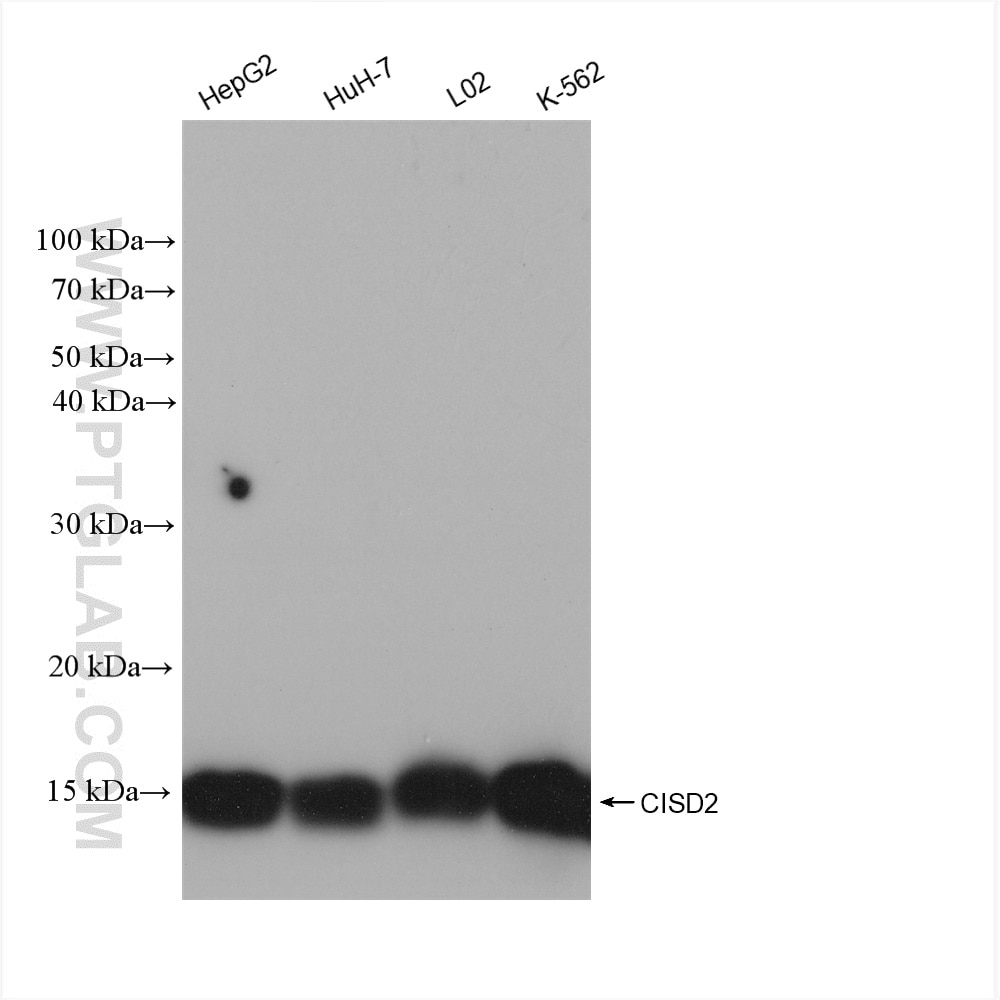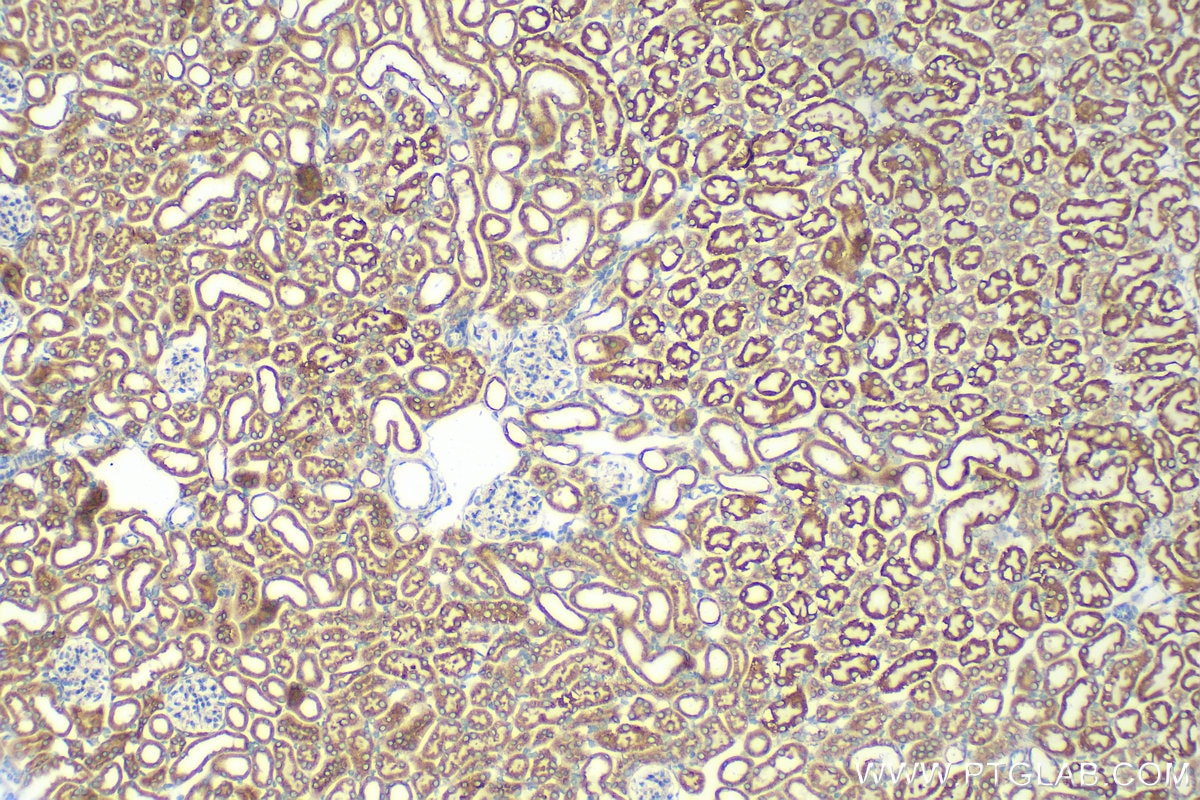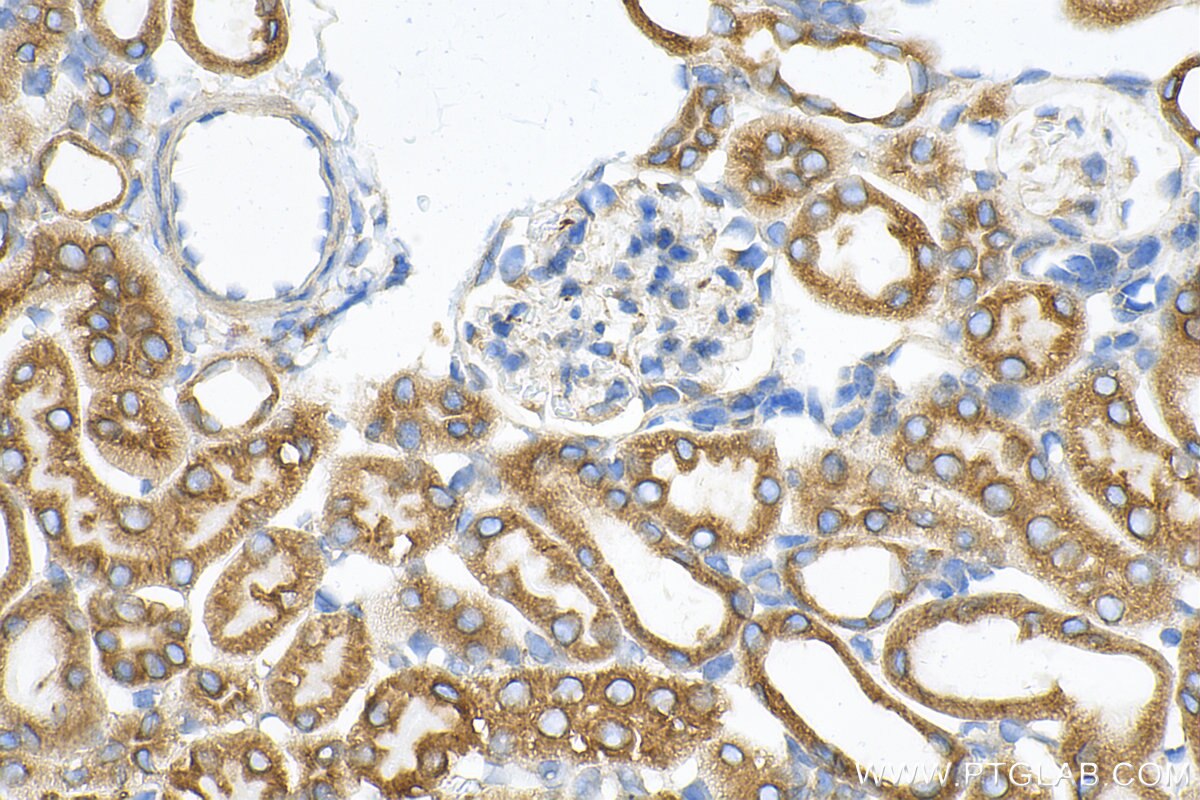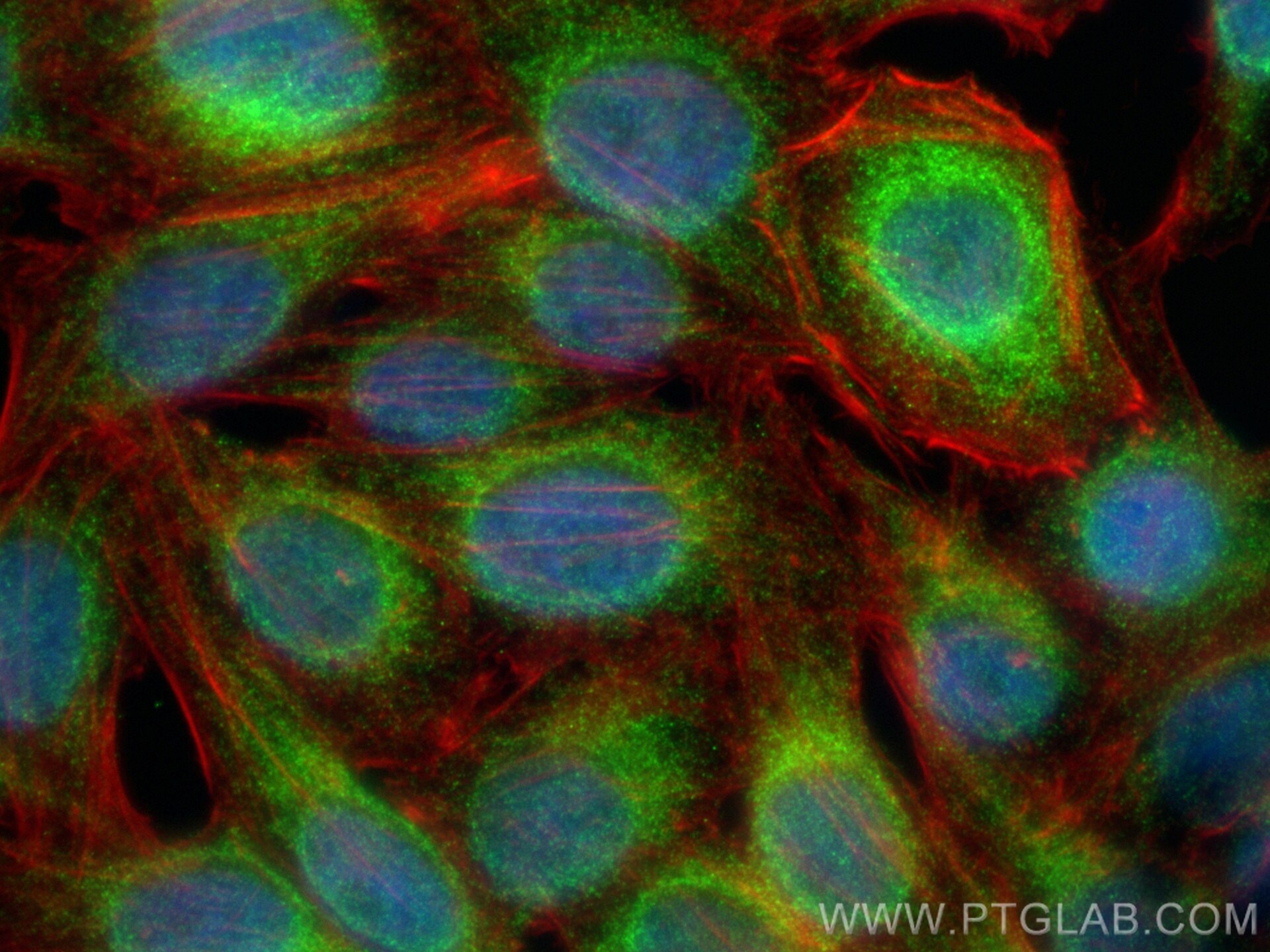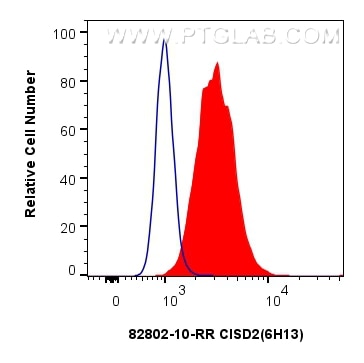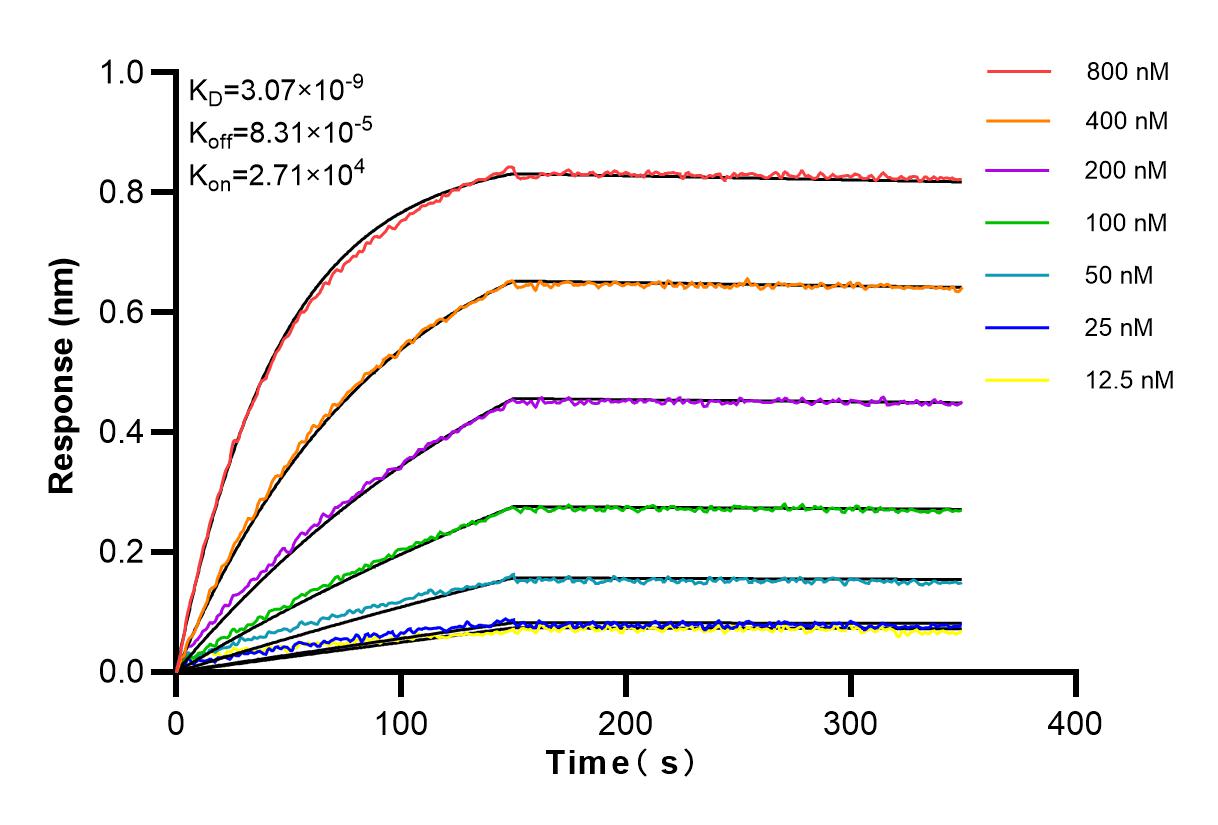CISD2 Rekombinanter Antikörper
CISD2 Rekombinant Antikörper für WB, IHC, IF/ICC, ELISA
Wirt / Isotyp
Kaninchen / IgG
Getestete Reaktivität
human, Maus
Anwendung
WB, IHC, IF/ICC, ELISA
Konjugation
Unkonjugiert
CloneNo.
6H13
Kat-Nr. : 82802-10-RR
Synonyme
Geprüfte Anwendungen
| Erfolgreiche Detektion in WB | HepG2-Zellen, K-562-Zellen, L02-Zellen |
| Erfolgreiche Detektion in IHC | Mausnierengewebe Hinweis: Antigendemaskierung mit TE-Puffer pH 9,0 empfohlen. (*) Wahlweise kann die Antigendemaskierung auch mit Citratpuffer pH 6,0 erfolgen. |
| Erfolgreiche Detektion in IF/ICC | HepG2-Zellen |
| Erfolgreiche Detektion in FC (Intra) | HepG2-Zellen |
Empfohlene Verdünnung
| Anwendung | Verdünnung |
|---|---|
| Western Blot (WB) | WB : 1:1000-1:5000 |
| Immunhistochemie (IHC) | IHC : 1:50-1:500 |
| Immunfluoreszenz (IF)/ICC | IF/ICC : 1:200-1:800 |
| Durchflusszytometrie (FC) (INTRA) | FC (INTRA) : 0.25 ug per 10^6 cells in a 100 µl suspension |
| It is recommended that this reagent should be titrated in each testing system to obtain optimal results. | |
| Sample-dependent, check data in validation data gallery | |
Produktinformation
82802-10-RR bindet in WB, IHC, IF/ICC, ELISA CISD2 und zeigt Reaktivität mit human, Maus
| Getestete Reaktivität | human, Maus |
| Wirt / Isotyp | Kaninchen / IgG |
| Klonalität | Rekombinant |
| Typ | Antikörper |
| Immunogen | CISD2 fusion protein Ag4172 |
| Vollständiger Name | CDGSH iron sulfur domain 2 |
| Berechnetes Molekulargewicht | 135 aa, 15 kDa |
| Beobachtetes Molekulargewicht | 15 kDa |
| GenBank-Zugangsnummer | BC032300 |
| Gene symbol | CISD2 |
| Gene ID (NCBI) | 493856 |
| Konjugation | Unkonjugiert |
| Form | Liquid |
| Reinigungsmethode | Protein-A-Reinigung |
| Lagerungspuffer | PBS with 0.02% sodium azide and 50% glycerol |
| Lagerungsbedingungen | Bei -20°C lagern. Nach dem Versand ein Jahr lang stabil Aliquotieren ist bei -20oC Lagerung nicht notwendig. 20ul Größen enthalten 0,1% BSA. |
Hintergrundinformationen
CISD2 gene encodes a 15 kDa CDGSH iron-sulfur domain-containing protein 2, which is also named Miner1 or NAF-1, this protein was reported on endoplasmic reticulum membrane or mitochondrion outer membrane. Defects in CISD2 are the cause of Wolfram syndrome type 2 (WFS2), a rare disorder characterized by juvenile-onset insulin-dependent diabetes mellitus with optic atrophy. CISD2 regulates autophagy program by interacting BCL2, contributing to antagonize BECN1-mediated cellular autophagy at the endoplasmic reticulum.
Protokolle
| PRODUKTSPEZIFISCHE PROTOKOLLE | |
|---|---|
| WB protocol for CISD2 antibody 82802-10-RR | Protokoll herunterladen |
| IHC protocol for CISD2 antibody 82802-10-RR | Protokoll herunterladenl |
| IF protocol for CISD2 antibody 82802-10-RR | Protokoll herunterladen |
| FC protocol for CISD2 antibody 82802-10-RR | Download protocol |
| STANDARD-PROTOKOLLE | |
|---|---|
| Klicken Sie hier, um unsere Standardprotokolle anzuzeigen |
